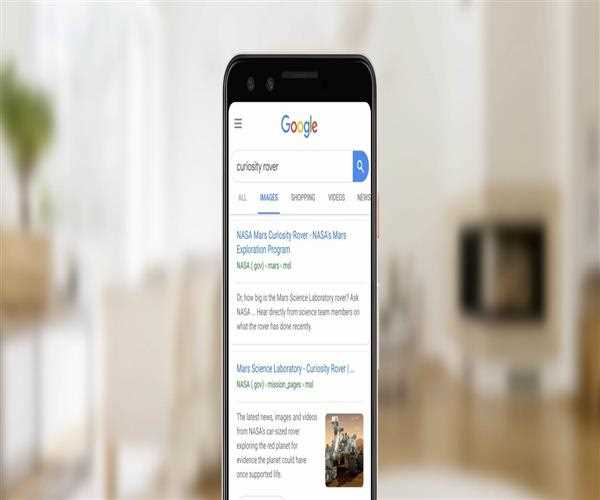Gadgets are an important part of our daily commute and activities. From creating a simple memo to conducting important professional meetings today we can perform almost every activity. There are several aspects of technology that are put into consideration for the success of a gadget that we use on the daily basis. Features of a gadget often attract the most attention. These features are an extended work by the companies such as logomines who create user-friendly applications with better functioning and design.
While everyone is in the hot-cold pool of privacy concerns, Google in 2019 announced an inevitable home device that was ever ready to scan our faces. Google's new device Hub Max smart display comes with a new face-tracking camera that is built for exceptional face scanning and recognition.
In the Nest Hub, Max, the breathing green light beside the camera indicates that the camera is available for face scanning. At the same time, it turns solid through functions such as video calls, video upload to the cloud, or merely an individual watching.
Google explained that the green light is more than just a scanner to remember your face, but it comes with exciting and convenient functions. The face match feature named Google uses facial recognition technology to memorize the face patterns; its purpose is to provide a more personalized experience for the users.
The technology this time is more than to unlock your devices or authorize purchases, the face match features are designed to assist you with the personalized bits of data such as appointments, Google duo messages, and other notifications as soon as you touch the screen, and the device recognizes you.
While several facial recognition devices were applauded in 2019, Nest Hub Max beat it to the top. The facial recognition feature can also be used as a security camera. You can view the feed on android TV, Google Home, or any nest apps quickly. It will require the recorded video clips to be uploaded on the Google servers. Moreover, the feature also has the ability to spot a hand gesture as a command to pause or resume the playback as well.
To set the feature on its course all you have to do is use face match with your phone through which a face model will be created and attached to the user's profile on the Nest Hub Max device.
What Are The Privacy Concerns?
Recently, there have been a lot of privacy concerns since the tech giants decided to go transparent with how much and what Google collects personal data for other business practices.
Devices such as Google Home and Nest Hub Gadgets already have inbuilt microphones designed to keep listening for the words and phrases used to activate the assistant.
The face match feature came under the shade of specific legal and ethical considerations concerning homes' privacy. Fortunately, Google immediately cleared the conspiracy theories regarding privacy standards.
The biggest privacy concern was that whatever the continuous breathing camera is recording, is it being uploaded to the cloud-like the rest of the user's information?
Google Spokesman explained that if the camera is not turned off via the hardware or software switch manually, then the camera sensing is continuously processing pixels and functioning as a facial and gesture recognizing feature. However, the new feature's upside is that the camera sensing and processing are done locally on the device only, and no hint of recording or even pixel leaves the nest hub max.
In short, the facial recognition feature is not designed to upload any recordings to the Google cloud unless manually processed. Moreover, face and gesture data and the nest cam data, will not be used for ad personalization either.
It was further explained that the only thing that will influence the personalized ads on your device would be your Google searches and YouTube viewing history, among other inquiries.
The purpose of the design is to serve all types of the audience, and for that, you can subscribe to nest aware for your hub max. Nest awareness, it was explained, allows you to review your recordings and delete them anytime from the nest app.
The Al camera features such as auto framing in video calls, face match, and quick gestures entirely excluded the cloud's involvement.
Additionally, to remain transparent with the audience, Google also explained that from time to time Google Cloud does store your face to improve the user experience, especially if more than one face pattern is stored on the device. However, all face models uploaded are for temporary processes only, and all models are discarded permanently.
While Nest Hub Max might be considered just another product to provide Google with a broader window into our lives, it is merely not as bad as we had hoped.
Did Technology Face Any Negative Feedback?
Nest Hub Max certainly dodged a bullet as far as privacy was concerned, but critics did find a minor flaw in the design.
As a small-sized nest hub owner, you will probably need to upgrade to the nest hub max. The former technology of Google does not include a camera; however, the later updated versions come with a nice feature that disables that camera and microphones. The users can find the kill feature behind the screen for easy use.
Although the kill feature is a remarkable addition, it is still a step short of including the physical shutter covering the camera entirely. Audiences have widely applauded the camera shutter feature in devices such as Lenovo Smart Display 10, the JBL Link View, and even Facebook Portal other than Google assistant smart display. The season camera shutter feature in most devices received outstanding response due to the sense of privacy it offers. You can easily choose to keep the shutter entirely closed when the device is not in use. People reviewed that the feature specifically made it easier to keep the device in the bedroom. Google, however, defended its design by downplaying the distinction between the two features.
According to the Google spokesmen, the design includes a combination switch of camera plus mic designed to electronically disable both the mic and camera, which is functionally equivalent to a physical shutter.




Leave Comment